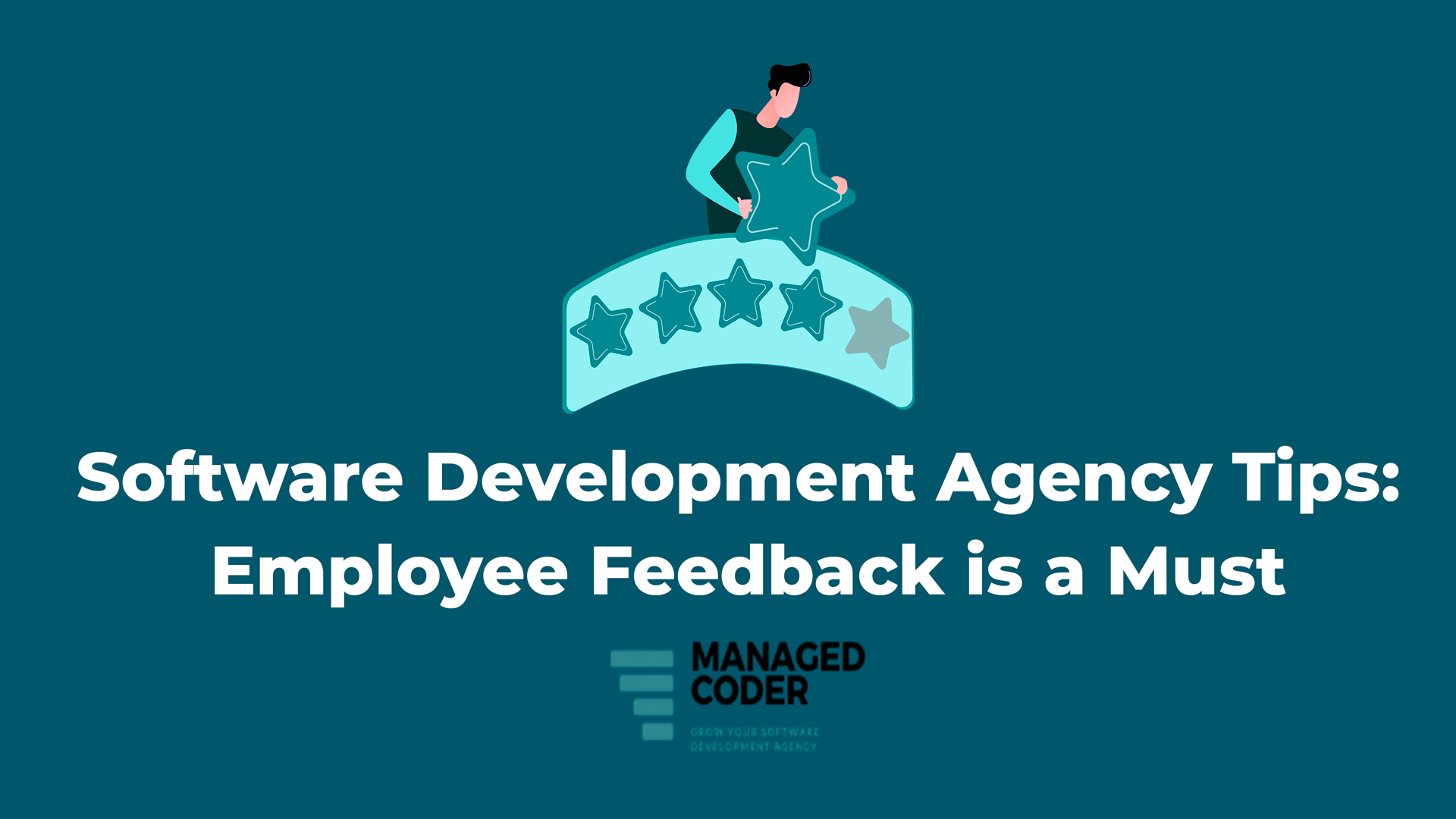
In business, waiting to address problems can lead to catastrophe. This is especially true for your software development agency when discussing the issue of your employee performance. In the past, companies would elicit limited feedback from employees while conducting extensive employee reviews to provide them with feedback. Increasingly, companies have begun to understand the importance of feedback being a two-way street.
Step One: Choose the Best Employee Feedback Software
If your company depends solely upon annual feedback reviews, underlying issues have far too much time to fester, leading to increased employee turnover and higher overall costs for the company. There are numerous options for software on the market that have made it easier than ever to open communication lines between employees and managers with both formal and informal types of feedback.
- 15Five
- 6Q
- Glint
- Office vibe
- Culture Amp
- Energage
- Subcurrent
- Impraise
- Reward Gateway
- TinyPulse
- Qualtrics
- Weekdone
- RoundPegg
- Hppy
- Reflektive
- Google Forms
Step Two: Define Feedback Criteria
There are two types of employee feedback that managers should encourage employees to give. The first type -formal feedback- is where you ask your employees direct questions. The second -informal feedback- is often less direct, though it can also encourage spontaneous in-the-moment feedback. To elicit informal feedback from employees, a manager must be trained to recognize unspoken signs of stress. Often, an employee may say they are satisfied with an issue when, in reality, they are not.
Defining Formal Employee Feedback Parameters
As an example, here at SJ Innovation, we have defined eight categories for eliciting employee feedback. These include:
- Personal growth
- Ambassadorship
- Relationship with management
- Relationship with peers
- Recognition
- Alignment
- Wellness
- Happiness
- Feedback
- Satisfaction
As a cutting-edge software development agency, you may have different areas that you would like to include in evaluating your employees’ satisfaction. When asking about their satisfaction with management’s action on feedback, it may also be advantageous to add to the categories. In time, you will build a strong framework to give you reliable insight into your employee’s happiness.
Defining Informal Employee Feedback
Informal feedback can give a manager greater on-the-spot clarity into the feelings of employees. There are several types of informal feedback a manager can be trained to recognize or elicit, such as:
- Body language
- Asking an employee directly
- Understanding how personal issues may be affecting an employee’s workday
Sometimes, all three types of informal feedback can be used. For example, when conducting a Friday afternoon meeting, you may notice your team’s body language seems disengaged. You pause to make sure everyone is on the same page by asking them directly for feedback on the issue being discussed. The group states that they understand perfectly and are ready for the weekend.
Understanding Employee Net Promoter Score (eNPS) Metrics
Once you have compiled your formal feedback surveys’ responses, you can get a good idea of what your business’ Employee Net Promoter Score is. It’s based on a customer relations formula called the Net Promoter Score, and both can help your software development agency understand both customer and employee satisfaction.
To calculate your eNPS, you subtract the percentage of detractors from the percentage of promoters. Suppose you get a fractional percentage, round the number up. For example, if the percentage of detractors is 28.62%, it would be rounded up to 29%. The range of scores can range from -100 to 100. Each company has its own definition of success in this area, but typically a score around 10 to 30 is considered good, while a score above 50 is excellent.
Step Three: Create and Maintain a Regular Feedback Gathering Schedule
Ensure your employees get into a routine of completing their surveys at regular intervals with no more than a month in between each one. The longer the time between each round of surveys, the more likely it is that employees will forget to mention issues they consider important. You will achieve the best results by sending out weekly surveys.
Step Four: Review Employee Feedback Regularly
Just as weekly surveys will yield the best results, so will weekly reviews by management. SJ Innovations has a manager meeting every Friday to review survey results. This gives leaders the weekend to digest the information and plan over the weekend to address issues the following week.
Step Five: Create Actionable Steps to Address Concerns
For each low-scoring area, find creative ways to create actionable steps to address those areas. At the start of the pandemic, we noticed our employee wellness scores were slipping a little due to the stressful situation. In response, we boosted our existing wellness plan by offering more company-sponsored activities such as yoga classes. In a short time, employee wellness scores began to rise again, gaining from 6.1 to 7.1. It is due to our ability to catch this change of trend and address it immediately.
Step Six: Share Feedback with All Employees
Your software development agency is a single, cohesive team. It is important to ensure you don’t keep feedback results hidden away behind the boss’ door. Share the scores and plans of action with all team members, including employees, managers, executives, and even stakeholders. The entire team will sincerely appreciate the transparency. Additionally, it will help the entire team hold each other accountable.
Step Seven: Patience
Don’t expect a dramatic change in employee morale after just a handful of surveys. This process will take time and effort. As you adjust the system, you may look for other ways to keep employees motivated and maintaining your company culture. Just remember not to give up. In time, the effort put in today to build a great employee feedback system will pay off.
